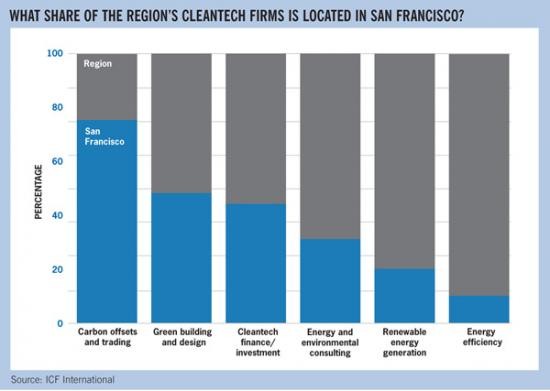Cleantech as a VC investment category is being reinvented San Francisco Green Careers
Post on: 16 Март, 2015 No Comment

Renewable energy sources — solar in California
wikicommons
Worldwide clean energy investment in 2013 decreased 20% year-by-year to $212 billion. Several reports have indicated that investments in renewable energy and energy technologies fell 11% in 2013, after a decline of 10% in 2012. (See Bloomberg New Energy Finance (BNEF), Cleantech Group report and Clean Energy Pipeline )
At the Greentech Media’s NextWave Cleantech Investment Conference today (in Menlo Park, Silicon Valley) Joshua Green from Mohr Davidow Ventures spoke about the view on the current cleantech investment landscape from the venture capital (VC) world point of view. Representing the Sand Hill Road take, Green announced: conventional wisdom is that VCs don’t invest in green tech today. What is currently happening with funding clean technologies?
In the past decade, a major chunk of venture capital and private equity investment in clean energy went into solar (42%) and smart grid (15%). Then, for the first time cleantech funding became purpose-based versus founded on technologies, and this new approach created tremendous high risk categories:
- Political, where lack of or insufficient legislation got in the way
- Unrelated technology
- Capital/ financial
Green tech was in some aspects ‘unfair': not all renewables are the same and should not be ‘treated’ as one category; solar is different from biofuels, for example. Further, cleantech is capital intensive and takes a longer time horizon for return of investment maturation. In conjunction, various technology disruptors in other domains were not, like social media platforms such as Twitter or Facebook.
The return on investment in software-products and services has been very appealing to VCs with short time frames for returns and with more known risk portfolios. Green suggested entrepreneurs to follow the money and should understand well what VCs are looking for. Does this mean exiting from cleantech and creating some attractive software solutions like social media or enter the collaborative work tools domain in the enterprise? The lesson learned is that when it comes to capital financing, cleantech is not high on the list. However, traditional capital funding is only a piece of the overall funding opportunities available to startups and entrepreneurs. There are other tracks of funding, from angel-based, family-based ventures, to the many opportunities of corporate ventures, collaborations, and even crowdfunding.
But Green said that the answer why cleantech investments are generally not favorable doesn’t lie in concerns of capital intensity; weak investment in green tech is due to the rise of the Lean Startup trend. So, what happened? Cleantech usually doesn’t play well with the lean startup model.
What interests VCs today?
The main areas of VC priorities are in:
- ‘Internet of Things’ (IoT) — the connected world
- Data analytics, models and usage in various industries
- Productivity software, unleashing significantly higher levels of productivity of existing hardware and industrial equipment
- Materials present new opportunities to innovate; not just software.
- Clean Web.
Is ‘clean web’ the only way to get VC funding in the green domain?
Leveraging the web and where it can reach, interact, and do to how we optimize resources, Clean Web in its essence is strongly linked to human behavior. People behavior and how they interact are crucial to transform our lives, where a single tech solution cannot do. Many of the models today do not address behavior since they are not geared to solve related issues, therefore creating a waste of resources. Fir example, an airline or a transportation company (like trains and buses) will run almost empty, even though that doesn’t make economic sense. A train will run with 2 or 200 passengers because our current transit models and systems are nit focused on optimization, from management systems, realtime interaction with riders, dynamic models, etc.
What is the power of clean web?
Clean web is really about optimizing resources through software. It is limited by our current technologies. Clean web doesn’t require federal approval or major policy to be activated.
For example, in the new cars, a software application can capture data about the vehicle performance and provide ‘vehicle health’ assessment and recommendations every minute, in every car trip. With clever analytics algorithms, the vehicle operator is alerted to potentially faulty vehicle systems in real time, enhancing safety for self, the passengers, other travelers on the roads, as well as the public. Similarly, the driver performance can be tracked in a different software app, analytics algorithms applied, and provide important info to the driver in real time and while in transit.
As we move into the future, the message to innovators and entrepreneurs is to explore new models of collaboration, look outside the traditional business models, and co-develop environmentally and socially-responsible solutions.
ADDITIONAL INFORMATION
NextWave Greentech Investing Conference is the annual gathering of leading investors, entrepreneurs and senior corporate executives to chart a new way forward in the greentech market. NextWave conferences are organized and produced by Greentech Media. a prominent clean technology media organization with a research and consulting arm. Greentech Media NextWave brings together investors, LPs, entrepreneurs, and corporate decision makers, providing a forum to network and discuss the opportunity around greentech market reinvention and the sustained returns to the investor and entrepreneur community.














